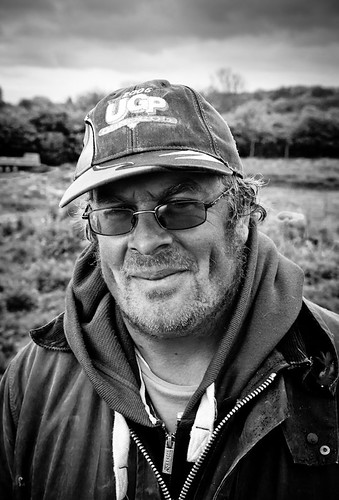I'm often asked just how many photographs do I take and how is it decided which images make it into the mag? The latter is pretty much up to the editor, and to a lesser extent, the designer. But I can influence the images they have to choose from during my editing phase.
I'm quite trigger-happy while I'm out on shoots, working on that little-known adage of 'more is more'. I ALWAYS make sure that I have more images than I need, whether that's the same shot from a variety of angles, or just different exposures of the same shot, with differing light, aperture values and ISOs thrown into the mix. It's all about covering your arse as much as possible and making sure that you give the editorial staff and design team enough material to work with. Keep them sweet and things are good!
To explain, I've revisited a shoot I did at the start of the year;
The angler, Ade Kiddell, is experienced and very willing to do whatever I tell him to do, whether that's re-casting several times or just holding a fish as I want. Anglers like this are a joy to work with. A journalist was in attendance - I rarely do any editorial writing these days - so that also made my life a bit easier because we could talk about the brief on the way there and adapt it as we saw fit through the day.
Anyway, we'd come to the River Wensum to shoot a piece on bread fishing. The fishing wasn't going to be easy but we had a chance of chub - in fact, Ade had one pretty much straight away so that was the important part done. Thankfully, chub deal with being keep netted quite well so he was retained for more shots later. It's always nice to get at least one fish in the bag when you're doing features about bigger fish, because it puts me at ease and allows me to focus on the incidentals and sequence shots.
So, the feature gets wrapped up after having a few fish and doing all the shots we'd talked about. Job done so far but then it's a case of working out what images work best. My instructions for the the types of shots depend on the magazine; some editors want things shot in a specific manner, but most just let me take creative control. We knew a pic of a big chub would work well, especially at a time of year (March issue) when big fish weren't exactly throwing themselves on the bank to be photographed. I also had to make sure sequences were submitted, plus some incidentals of Ade fishing, casting, netting, holding up tackle etc...

The images are loaded into Lightroom 3 and then the key wording and metadata is synced, then it's a case of selection. As you can see from the screen shot, there are 139 images in this specific folder; not a massive shoot by any stretch, but enough to gee me plenty of options. The ones of out-of-focus grass and the backs of people's heads while setting up flashes are rejected and then I go through and from each set of shots, I pick the best one, giving it a five-star rating. These 'keepers' are selected by how they'll process, how the focus and depth-of-field look and whether facial expressions and such-like are acceptable.
Once I have my five-star images I then get to work doing adjustments; sharpening, fill adjustment with black point and contrast are typical ones, as is noise reduction. I rarely crop or straighten, because the designer is going to be placing the images so they may end up as cut-outs and the horizon won't appear anyway.
When I have my final set of images then they're given to the editor, either in person (on a disc or loaded onto our server), or if I'm not in for a few days then they're uploaded to dropbox and the editorial staff take it from there. Images are put over as full-size JPEGs by the way and then TIFFed later by the repro department after being corrected for print.
Then it's a case of the editor teaming the images up to the copy (the text) and submitting his final choice in a job bag to the designer with any instructions about image placement, sequences and which images are available as main (opening) images.
As you can see by the final feature, the 'grip-and-grin' of the angler with a fish made the opening spread, with sequences and incidentals over the remaining spread. Am I happy? Yes, and I know that my editing procedure ultimately influenced the images that made it into the feature. Job done :)










